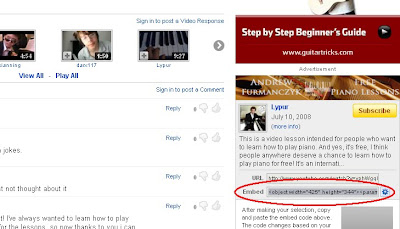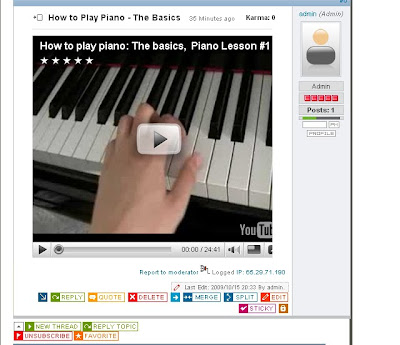First, the Piano is a lot more "loose" when it comes to standardizing simple chord inversions. There is no real de facto way to arrange the notes when playing chords on the Piano. Using the C Major chord as a simple example, a pianist can play it in the form of (first note-second note - third note) as C-E-G, C-G-E, G-C-E, and so on. Depending on the song and arrangement, a pianist may use many differing inversions when playing chords.
Guitar tends to be a lot more straightforward with chords usually being played in "root position". First, let's understand what a chord tonic is -- a tonic is the first note of a musical scale. Using C Major as our example, we have C-D-E-F-G-A-B, so C is the tonic. Root position is when the tonic of the chord is the lowest (bass) note. Again, for C Major the tonic is C. If we play a C Major chord that does not begin with C, then it is not in root position and thus is called an inversion.
How to create an inversion:
There are three common inversions called first inversion, second inversion and third inversion. Notes following the tonic of the chord are labeled as 3rd, 5th and 7th in each of these inversions. For C Major (C-E-G), C is the tonic, E is the 3rd because it is the first note after the tonic and G is the 5th because it is the second note after the tonic.
As such, every Major triad chord (Major chord with only three tones) has a tonic, 3rd and 5th of a Major scale. Every Major Seventh chord is made up of a tonic, 3rd, 5th and 7th of a Major scale. See the table below for other common of chord structures beyond this.
Common Inversions Summary:
First inversion: The 3rd of the chord is the bass note.
Second inversion: The 5th of the chord is the bass note.
Third inversion: The 7th of the chord is the bass note.
Using these chord constructions, you can mimic an inversion played on the Piano, on the Guitar! Practice breaking down the chord, finding the tonic, 3rd, 5th, 7th and 9th and then piecing it back together to form whatever inversion is desirable. Depending on the inversion and the tones making up the chord, it may be difficult to position all of your fingers around the chord, but keep practicing and you may even discover some unique more piano-esque chordal arrangements to use in place of the same old root position chords.
| Guide to Forming Chords | |
| Type of Chord | Chord Structure |
| Major Triad | 1st (root) + 3rd + 5th notes of a major scale |
| Minor Triad | 1st (root) + 3rd + 5th notes of a minor scale |
| Diminished Triads | 1st (root) + flatted 3rd (b3) + flatted 5th (b5) notes of a major scale |
| Augmented Triads | 1st (root) + 3rd + sharped 5th (#5th) notes of a major scale. |
| Major 7th Chord | 1st (root) + 3rd + 5th + 7th notes of a major scale |
| Minor 7th Chord | 1st (root) + flatted 3rd (b3) + 5th + flatted 7th (b7) notes (derived from a major scale) |
| Dominant 7th Chord | 1st (root) + 3rd + 5th + flatted 7th (b7) notes of a major scale |
| Sixth Chord | 1st (root) + 3rd + 5th + 6th notes of a major or minor scale. |
| Dominant 9th Chord | add a ninth to a dominant 7th chord (1st + 3rd + 5th + flatted 7th + 9th) |
| Major 9th Chord | add a ninth to a major 7th chord (1st + 3rd + 5th + 7th + 9th) |
| Minor 9th Chord | add a ninth to a minor 7th chord (1st + 3rd + 5th + flatted 7th + 9th) |
| sus2 Chord | 1st (root) + 2nd + 5th notes of either a major or minor scale |
| sus4 Chord | 1st (root) + 4th + 5th notes of either a major or minor scale |




